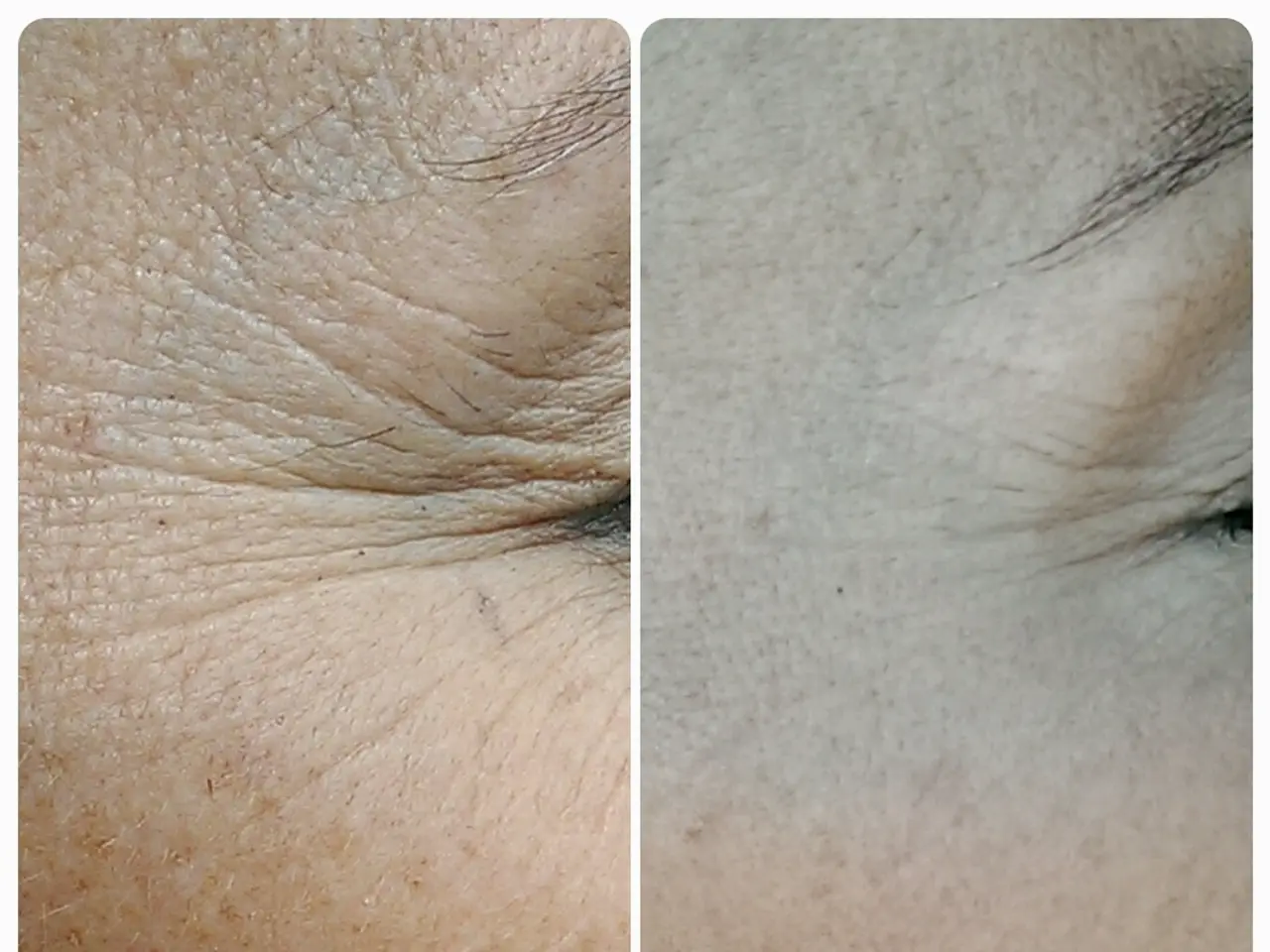Skin Exposure to Fiberglass: Recognizing Symptoms, Removal Methods, and Potential Hazards
Fiberglass, a synthetic material containing fragile glass fibers, is commonly used in various industries such as construction, boat manufacturing, and heating, ventilation, and air conditioning (HVAC) ductwork. However, working with fiberglass can pose risks, and safety measures should be taken to minimize exposure.
Exposure to fiberglass can lead to skin irritation and pain, with a fiberglass rash typically appearing as small blisters with dry, flaky skin, and may show protruding long glass fibers on pale skin. To soothe itching and dryness, a person can use emollient creams or topical corticosteroids, with doctors prescribing further treatment if needed.
For those who have come into contact with fiberglass, here's a safe and effective method for removing embedded particles:
- Gently wash the affected area with mild soap and cold water to remove surface fibers and dust. Avoid rubbing, which can push fibers deeper into the skin.
- Apply shaving cream generously on the affected skin. The cream softens both the skin and fiberglass, making removal easier.
- Wait a few minutes, then use clean, sterilized tweezers to carefully extract any visible fiberglass splinters or fibers protruding from the skin.
- For very fine or stubborn fibers, using adhesive tape (such as duct tape) can help lift out embedded particles by gently pressing the sticky side onto the skin and peeling it off slowly.
- After removal, clean the area with soap and water again and keep it clean to prevent infection.
- Optionally, soaking in a warm bath with salt and gently rubbing the skin with an old pantyhose or soft cloth may help remove remaining tiny fibers.
- A cold shower prior to washing can help close pores and reduce fibers embedding further.
- Monitor the area for signs of infection or inflammation such as redness, swelling, itching, or burning. Seek medical attention immediately if these symptoms or rashes develop.
In cases where fibers are deeply embedded and cannot be removed by the above methods, or if irritation or infection occurs, professional medical treatment is advisable to avoid complications.
It's important to note that while the International Agency for Research on Cancer found no evidence that fiberglass exposure increases the risk of cancer in humans in 2002, scientists need to carry out more research to determine if fiberglass may be carcinogenic in humans.
To minimize exposure, it's crucial to wear protective clothing, masks, goggles, and to clean surfaces with a wet cloth or vacuum while working with fiberglass. People should also wash the clothing they wear while working with fiberglass after each work shift.
In conclusion, understanding how to safely remove embedded fiberglass particles from the skin is crucial for anyone who works with this material. By following these steps, individuals can effectively manage fiberglass embedded in the skin across various severities, ensuring a safer and healthier work environment.
[1] Health and Safety Executive. (n.d.). Managing the risks of exposure to respirable crystalline silica in construction. Retrieved from www.hse.gov.uk/pubns/geis7.htm
[2] Occupational Safety and Health Administration. (n.d.). Fiberglass. Retrieved from www.osha.gov/SLTC/fiberglass/
[3] Mayo Clinic. (2021, February 12). Fiberglass dermatitis. Retrieved from www.mayoclinic.org/diseases-conditions/dermatitis/in-depth/fiberglass-dermatitis/art-20045849
[4] American Academy of Dermatology. (n.d.). Fiberglass dermatitis. Retrieved from www.aad.org/public/diseases/a-z/fiberglass-dermatitis
- Fiberglass exposure has been linked to respiratory issues, such as bronchitis and asthma, due to tiny particles becoming airborne upon handling the material.
- For individuals with existing conditions like multiple sclerosis, sclerosis, diabetes, or Crohn's disease, exposure to fiberglass may exacerbate their symptoms and could potentially lead to complications.
- Workplace safety policies should prioritize wearing protective equipment, routine clothes changing, and thorough cleaning in manufacturing industries involving fiberglass to promote workplace-wellness.
- Apart from skin-care applications, the fiberglass industry should collaborate with science to devise promising solutions that minimize human exposure and associated risks.
- In addition to dermatitis, fiberglass exposure may cause psoriatic psoriasis or ulcerative colitis, with scientists suggesting a potential link between these diseases and the synthetic material.




